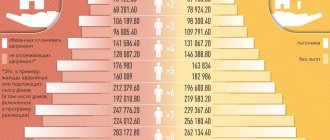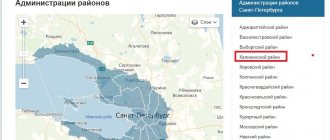Electricity is a type of utility service that you cannot do without, but it is also quite difficult to pay for it.
In addition to various energy saving techniques, there is another alternative way to save electricity - install a special meter and use a night tariff.
By using basic electrical appliances at night, you can significantly reduce your utility bills.
Night electricity tariff: what time does it start and when does it end? What else do you need to know and how to manage your time? The answers to these questions are in our article.
Electricity by the hour - who benefits from it?
During the day, the population uses electricity unevenly . During the daytime, the stations operate almost under time pressure, but in the evenings their load is minimal. Therefore, during the daytime, as a rule, there is a peak in consumption: all generators turn on, and at night, on the contrary, some of them turn off.
This uneven operating mode contributes to high fuel costs for equipment. And this leads to a significant overexpenditure of resources. Therefore, the cost of generating electricity is steadily rising.
To reduce costs, energy suppliers have developed a differentiated tariff that operates by day zone.
It is cheaper to use electricity at night, and this encourages the population to actively use it at this time of day. Thus, the maximum consumption shifts. You can save only if you have a two- or three-tariff meter.
Electricity tariffs in St. Petersburg in the second half of 2021
| Indicator (consumer groups broken down by rates and differentiated by day zones) | Price (tariff) in rub./kWh | |
| 1. Urban population | ||
| Around the clock | 4,98 | |
| 2. Population living in houses equipped with stationary electric stoves | ||
| Around the clock | 3,73 | |
| 3. Population living in rural settlements and equivalent to them | ||
| Around the clock | 4.98 | |
| 4. Gardening, gardening or dacha non-profit associations of citizens | ||
| Around the clock | 4,98 | |
| 5. Consumers equal to the population (with the exception of horticultural, gardening or dacha non-profit associations of citizens) | ||
| Around the clock | 4,98 | |
What time does the night rate start?
At the legislative level, 3 options for tariffing electricity consumption are defined:
- single;
- 2-zone;
- 3-zone.
The payment coefficient is uniform and constant, time does not affect it.
When choosing a single tariff, costs are calculated using a traditional meter without differentiation. This is suitable for consumers who do not want to change equipment.
Using a 2-zone tariff requires the installation of a two-tariff electricity meter.
The meter calculates the level of current consumption in different time zones . Here is the time at which it turns on:
- from 7.00 to 23.00 - daily rate (more expensive);
- from 23.00 to 7.00 - night rate.
Calculation of payments for daytime and nighttime electricity tariffs is carried out in the following way: data from the meter is multiplied by the tariff adopted by local authorities.
Two lines are entered in the receipt for utilities - for daytime and nighttime tariffs, respectively.
The 3-zone tariff is based on a principle similar to the 2-zone tariff, but the time frame is different.
Below you can see from how many hours and until how long time zones last:
- from 23.00 to 7.00 hours - night rate;
- from 7.00 to 10.00 and from 17.00 to 21.00 hours - peak time;
- from 10.00 to 17.00 and from 21.00 to 23.00 - half-peak zones.
Each time period has its own coefficient. However, this scheme has not become widespread due to the weak difference in the benefits of the last two zones.
Tariff validity period
With a two-tariff calculation method, the night tariff for electricity is applied, the time of its use is from 23:00 to 7:00. It is worth calculating how much you can save by using it.
For example, in 2021, the simple electricity tariff for the Moscow region is 4.04 rubles/kWh. If we consider a two-tariff system, then during daylight hours users pay 4.65 rubles/kWh, and during dark hours the tariff applies with a coefficient of 1.26 rubles/kWh. Despite the fact that the difference between the single and daily two-rate system is 61 kopecks. in favor of the first, the savings are obvious. Electricity consumption at night will be more than 3 times cheaper.
Savings are only possible if a person is not at home during the daytime, but can do some household chores at night. Experts have calculated that switching to a differentiated tariff is beneficial if the consumer consumes at least 500 kW monthly.
Time of night electricity tariff
The 2-tariff method uses night mode for electricity . The time of its use starts from 23.00 and lasts until 7.00.
You can first calculate how much you can save. As a rule, light at night costs almost 3 times less.
It is only possible to save money if a person is not at home during the day and prefers to solve everyday issues at night - use electrical appliances, do laundry, cook, etc.
Experts believed that when switching to a differentiated approach, you can get real benefits by spending at least 500 kW per month.
Electricity tariff for two zones in St. Petersburg from 07/01/2021
| Indicator (consumer groups broken down by rates and differentiated by day zones) | Price (tariff) in rub./kWh | |
| 1. Urban population | ||
| Daytime zone (peak and half-peak) 07:00 - 23:00 | 5,71 | |
| Night zone (peak and half-peak) 23:00 - 07:00 | 3,15 | |
| 2. Population living in houses equipped with stationary electric stoves | ||
| Daytime zone (peak and half-peak) 07:00 - 23:00 | 4,28 | |
| Night zone (peak and half-peak) 23:00 - 07:00 | 2,36 | |
| 3. Population living in rural settlements and equivalent to them | ||
| Daytime zone (peak and half-peak) 07:00 - 23:00 | — | |
| Night zone (peak and half-peak) 23:00 - 07:00 | — | |
| 4. Gardening, gardening or dacha non-profit associations of citizens | ||
| Daytime zone (peak and half-peak) 07:00 - 23:00 | 5,71 | |
| Night zone (peak and half-peak) 23:00 - 07:00 | 3,15 | |
| 5. Consumers equal to the population (with the exception of horticultural, gardening or dacha non-profit associations of citizens) | ||
| Daytime zone (peak and half-peak) 07:00 - 23:00 | 5,71 | |
| Night zone (peak and half-peak) 23:00 - 07:00 | 3,15 | |
Temporary peak zones
With daily dynamics, there are several rush hours:
- morning peak - from 7.00 to 10.00;
- daytime zone (first half-peak) - from 10.00 to 17.00 (not too heavy a load);
- evening peak - from 17.00 to 21.00;
- the second half-peak zone is from 21.00 to 23.00.
To obtain savings on utility bills specifically for power supply, you will need to install special metering devices and change your usual lifestyle.
This means that powerful electrical appliances can only be used at night.
The designation of day and night on a two-tariff meter is fixed by symbols T1 and T2 . The period for T1 starts at 7.00, for T2 - at 23.00. Peak zones are taken into account if electricity consumption is calculated using a three-tariff meter.
Day-night tariff
A tariff based on a two-phase method is usually called day-night. And although tariffs for the population differ, the 2-phase method is very popular in many regions of the country.
The differentiated tariff is most popular in Moscow. Its benefits are obvious to those who:
- actively uses powerful electrical appliances in everyday life - bread machines, dishwashers, boilers;
- equipped your home with a convection heating system and heated floors;
- has spacious suburban real estate, the lighting of which requires numerous electrical appliances, sewer and well pumps.
Access to the service is open to all persons who do not have arrears in payments for electricity, have paid a special fee for tariff identification and have entered into an agreement with the service provider.
Benefits of a night tariff in 2021
There are advantages to using a night tariff, and they are obvious:
- good money savings when adjusting the regime, reducing daytime electricity consumption and increasing nighttime consumption;
- reducing the load on the supplier’s equipment, reducing its wear and eliminating breakdowns. All this ultimately leads to budget savings;
- evenly distributing the load on the power grid is the best way to save fuel used to generate electricity;
- if there is no overload on the power grid, the amount of emissions of harmful substances into the atmosphere is reduced;
- modern meters are the latest modernized devices equipped with built-in memory modules that retain readings even if there is a sudden power outage.
Consumers should be aware that different preferential rates apply in different regions . Before switching to a differential system, it would be a good idea to calculate the economic benefits of such a solution.
If only the refrigerator is running in the house at night, a two-tariff system is not so necessary. Calculate how long it will take to pay off the costs of installing new equipment and electrician services.
Disadvantages of the night tariff
There is always a drop of tar in every barrel of honey. There are also disadvantages in using the night tariff:
- If you use electrical appliances at night, some of them should not be left unattended. As a result, sleep patterns may be disrupted and health problems may arise;
- appliances left unattended can cause fire or flooding;
- noise from household appliances can interfere with other family members’ rest;
- significant costs for installing a metering device and the services of electrical specialists.
If you actively use the night tariff, all expenses will be recouped in the first year of its use.
The essence of multi-tariff electricity metering
Throughout the day, electricity is consumed unevenly by the population. If during the day the stations operate at full capacity, then in the evenings the load on them is minimal. As a result, during the daytime hours, when consumption peaks, all generators operate, but at night some of them stop.
Uneven operation of equipment that consumes a lot of fuel causes excessive consumption of resources. As a result, the costs of producing electrical energy are rising sharply. To reduce costs, suppliers have introduced tariffs differentiated by day zones. At night, electricity is cheaper, which encourages people to use it more actively at night, thereby shifting the maximum consumption. You can take advantage of this advantageous offer by installing a three-tariff or two-tariff meter.
How to connect a night tariff for electricity
To switch to the two-tariff mode, follow the following instructions:
- Contact your service provider in your area.
- Visit their branch and find out the technical feasibility of switching to a differentiated system.
- Draw up an agreement for the supply of electricity to a specific facility.
- Write an application for installation of a 2-tariff power meter. The application will be accepted only if you have no debt on utility bills for electricity, payment has been made for the dismantling of old equipment and installation of new equipment, its connection and configuration.
- It is not necessary to purchase a meter with a night tariff from a service provider. This can be done at any specialized company or store, but in this case you will need to first submit the device for verification.
In Russia, the installation of both domestic and imported meters is allowed. Experts advise choosing Russian equipment.
These devices are adapted to voltage surges in the network and are marked with state certification . Their cost is significantly lower than their foreign counterparts.
You can do the installation and connection yourself, but it is better to use the services of qualified craftsmen. The specialist must have an electrical safety permit.
After installing and configuring the equipment, a report is drawn up that will need to be submitted to the energy sales office . In most regions of Russia, energy supply service providers provide a full package of services for switching to a night tariff.
Rates
2020 - electricity tariffs for the population of St. Petersburg
On this page you can find out about new electricity tariffs for the population of St. Petersburg, effective from January 1, 2021
| No. | Indicator (consumer groups with tariff breakdown by rates and differentiation by day zones) | Unit | Price (tariff) |
| 1 | 2 | 3 | 4 |
| 1 | The population and those equivalent to them, with the exception of the population and consumers specified in paragraphs 2 and 3 (tariffs are indicated including VAT)1: providers of public services (homeowners' associations, housing construction, housing or other specialized consumer cooperatives or management organizations), purchasing electrical energy (power) to provide utility services to owners and users of residential premises and maintain the common property of apartment buildings; landlords (or persons authorized by them) providing citizens with residential premises of a specialized housing stock, including residential premises in dormitories, residential premises of a flexible fund, residential premises in houses of the social service system, residential premises of a fund for the temporary settlement of forced migrants, residential premises of a fund for temporary residence of persons recognized as refugees, as well as residential premises for the social protection of certain categories of citizens, acquiring electrical energy (power) to provide utility services to users of such residential premises in the amount of electricity consumption by the population and maintenance of common areas in houses in which there are residential premises specialized housing stock; legal entities and individuals purchasing electrical energy (power) for the purpose of consumption for household needs in populated areas and residential areas attached to military units and paying under an energy supply agreement according to the readings of a general electrical energy meter. Guaranteed suppliers, energy sales, energy supply organizations that purchase electrical energy (power) for the purpose of further sale to the population and equivalent categories of consumers specified in this paragraph.3 | ||
| 1.1 | One-part tariff | RUB/kWh | 4,65 |
| 1.2 | One-rate tariff differentiated by two zones of the day2 | ||
| Daytime zone (peak and half-peak) | RUR/kWh | 5,13 | |
| Night zone | RUR/kWh | 2,96 | |
| 1.3 | One-rate tariff differentiated by three zones of the day2 | ||
| Peak zone | RUR/kWh | 5,16 | |
| Half-peak zone | rub./kWh | 4,65 | |
| Night zone | RUR/kWh | 2,96 | |
| 2 | The population living in urban settlements in houses equipped in the prescribed manner with stationary electric stoves and (or) electric heating installations and equivalent to them (tariffs are indicated including VAT)1: providers of public utilities (homeowners' associations, housing construction, housing or other specialized consumer cooperatives or management organizations) that purchase electrical energy (power) to provide utility services to owners and users of residential premises and maintain the common property of apartment buildings; landlords (or persons authorized by them) providing citizens with residential premises of a specialized housing stock, including residential premises in dormitories, residential premises of a flexible fund, residential premises in houses of the social service system, residential premises of a fund for the temporary settlement of forced migrants, residential premises of a fund for temporary residence of persons recognized as refugees, as well as residential premises for the social protection of certain categories of citizens, acquiring electrical energy (power) to provide utility services to users of such residential premises in the amount of electricity consumption by the population and maintenance of common areas in houses in which there are residential premises specialized housing stock; legal entities and individuals purchasing electrical energy (power) for the purpose of consumption for household needs in populated areas and residential areas attached to military units and paying under an energy supply agreement according to the readings of a general electrical energy meter. Guaranteed suppliers, energy sales, energy supply organizations that purchase electrical energy (power) for the purpose of further sale to the population and equivalent categories of consumers specified in this paragraph.3 | ||
| 2.1 | One-part tariff | RUR/kWh | 3,48 |
| 2.2 | One-rate tariff differentiated by two zones of the day2 | ||
| Daytime zone (peak and half-peak) | RUR/kWh | 3,84 | |
| Night zone | RUR/kWh | 2,22 | |
| 2.3 | One-rate tariff differentiated by three zones of the day2 | ||
| Peak zone | RUR/kWh | 3,89 | |
| Half-peak zone | RUB/kWh | 3,48 | |
| Night zone | rub./kWh | 2,22 | |
| 3 | Population living in rural settlements and those equivalent to them (tariffs are indicated including VAT)1: providers of public services (homeowners' associations, housing construction, housing or other specialized consumer cooperatives or management organizations) purchasing electrical energy (power) for provision of utility services to owners and users of residential premises and maintenance of common property of apartment buildings; landlords (or persons authorized by them) providing citizens with residential premises of a specialized housing stock, including residential premises in dormitories, residential premises of a flexible fund, residential premises in houses of the social service system, residential premises of a fund for the temporary settlement of forced migrants, residential premises of a fund for temporary residence of persons recognized as refugees, as well as residential premises for the social protection of certain categories of citizens, acquiring electrical energy (power) to provide utility services to users of such residential premises in the amount of electricity consumption by the population and maintenance of common areas in houses in which there are residential premises specialized housing stock; legal entities and individuals purchasing electrical energy (power) for the purpose of consumption for household needs in populated areas and residential areas attached to military units and paying under an energy supply agreement according to the readings of a general electrical energy meter. Guaranteed suppliers, energy sales, energy supply organizations that purchase electrical energy (power) for the purpose of further sale to the population and equivalent categories of consumers specified in this paragraph.3 | ||
| 3.1 | One-part tariff | RUR/kWh | — |
| 3.2 | One-rate tariff differentiated by two zones of the day2 | ||
| Daytime zone (peak and half-peak) | RUR/kWh | — | |
| Night zone | RUR/kWh | — | |
| 3.3 | One-rate tariff differentiated by three zones of the day2 | ||
| Peak zone | RUR/kWh | — | |
| Half-peak zone | RUR/kWh | — | |
| Night zone | RUR/kWh | — | |
| 4 | Consumers equal to the population (tariffs are indicated including VAT)1 | ||
| 4.1 | Gardening, vegetable gardening or dacha non-profit associations of citizens are non-profit organizations established by citizens on a voluntary basis to assist its members in solving general social and economic problems of gardening, horticulture and dacha farming. Guaranteed suppliers, energy sales, energy supply organizations that purchase electrical energy (power) for the purpose of further sale to the categories of consumers equal to the population specified in this paragraph.3 | ||
| 4.1.1 | One-part tariff | RUR/kWh | 4,65 |
| 4.1.2 | One-rate tariff differentiated by two zones of the day2 | ||
| Daytime zone (peak and half-peak) | RUR/kWh | 5.13 | |
| Night zone | RUR/kWh | 2.96 | |
| 4.1.3 | One-rate tariff differentiated by three zones of the day2 | ||
| Peak zone | RUR/kWh | 5,16 | |
| Half-peak zone | RUR/kWh | 4,65 | |
| Night zone | RUR/kWh | 2,96 | |
| 4.2 | Legal entities purchasing electrical energy (power) for the purpose of consumption by convicts in the premises for their detention, subject to the availability of separate metering of electrical energy for these premises. Guaranteed suppliers, energy sales, energy supply organizations that purchase electrical energy (power) for the purpose of further sale to categories of consumers equal to the population specified in this paragraph.3 | ||
| 4.2.1 | One-part tariff | RUR/kWh | 4,65 |
| 4.2.2 | One-rate tariff differentiated by two zones of the day2 | ||
| Daytime zone (peak and half-peak) | RUR/kWh | 5.13 | |
| Night zone | rub./kWh | 2.96 | |
| 4.2.3 | One-rate tariff differentiated by three zones of the day2 | ||
| Peak zone | RUR/kWh | 5.16 | |
| Half-peak zone | RUR/kWh | 4,65 | |
| Night zone | RUR/kWh | 2.96 | |
| 4.3 | Religious organizations maintained at the expense of parishioners. Guaranteed suppliers, energy sales, energy supply organizations that purchase electrical energy (power) for the purpose of further sale to categories of consumers equal to the population specified in this paragraph.3 | ||
| 4.3.1 | One-part tariff | RUR/kWh | 4,65 |
| 4.3.2 | One-rate tariff differentiated by two zones of the day2 | ||
| Daytime zone (peak and half-peak) | RUR/kWh | 5.13 | |
| Night zone | RUR/kWh | 2.96 | |
| 4.3.3 | One-rate tariff differentiated by three zones of the day2 | ||
| Peak zone | RUR/kWh | 5.16 | |
| Half-peak zone | RUR/kWh | 4,65 | |
| Night zone | RUR/kWh | 2.96 | |
| 4.4 | Associations of citizens purchasing electrical energy (power) for use in their outbuildings (cellars, sheds). Non-profit associations of citizens (garage construction, garage cooperatives) and citizens who own detached garages, purchase electrical energy (power) for consumption for household needs and not used for commercial activities. Guaranteed suppliers, energy sales, energy supply organizations that purchase electrical energy (power) for the purpose of further sale to categories of consumers equal to the population specified in this paragraph.3 | ||
| 4.4.1 | One-part tariff | RUR/kWh | 4,65 |
| 4.4.2 | One-rate tariff differentiated by two zones of the day2 | ||
| Daytime zone (peak and half-peak) | RUR/kWh | 5.13 | |
| Night zone | RUR/kWh | 2.96 | |
| 4.4.3 | One-rate tariff differentiated by three zones of the day2 | ||
| Peak zone | RUR/kWh | 5.16 | |
| Half-peak zone | RUR/kWh | 4,65 | |
| Night zone | RUR/kWh | 2.96 | |
Notes: 1. The planned volumes of useful supply of electrical energy (including taking into account differentiation by two and three zones of the day) for this group are indicated in Table 1 to this appendix. 2. The intervals of daily tariff zones for the population and equivalent categories of consumers are approved by order of the FAS of Russia. 3. If there are appropriate categories of consumers belonging to the population or equivalent categories of consumers, the guarantee supplier, energy sales, energy supply organization purchases electrical energy (power) for the purpose of further sale to the population and equivalent categories of consumers in the volume of actual consumption of the population and categories of consumers equated to it and the volume of electricity consumed in public places for the purpose of consumption for household needs of citizens and not used for commercial (professional) activities. 4. Reducing factors when setting prices (tariffs) for electrical energy are applied in accordance with Table 2 to this appendix. 5. Tariffs apply to electrical energy that complies with GOST 32144-2013 “Electric energy. Electromagnetic compatibility of technical equipment. Standards for the quality of electrical energy in general-purpose power supply systems" and GOST 29322-2014 "Standard voltages".
Order of the Tariff Committee of St. Petersburg dated December 16, 2019 No. 216-r “On setting tariffs for electrical energy supplied to the population and equivalent categories of consumers in St. Petersburg for 2021”
2020 - electricity tariffs for the population of St. Petersburg
How to get data from the device
Two-tariff metering devices record the amount of electricity consumed and other network parameters.
To obtain data on the amount of electricity consumed over a certain period of time, you will need to switch to identification mode : this will require a few simple manipulations on the meter buttons.
This mode provides information on current consumption in the dark and during daylight hours. So you will get the number of kilowatts spent separately at night and during the day. The recorded difference is multiplied by the coefficients established in the region.











